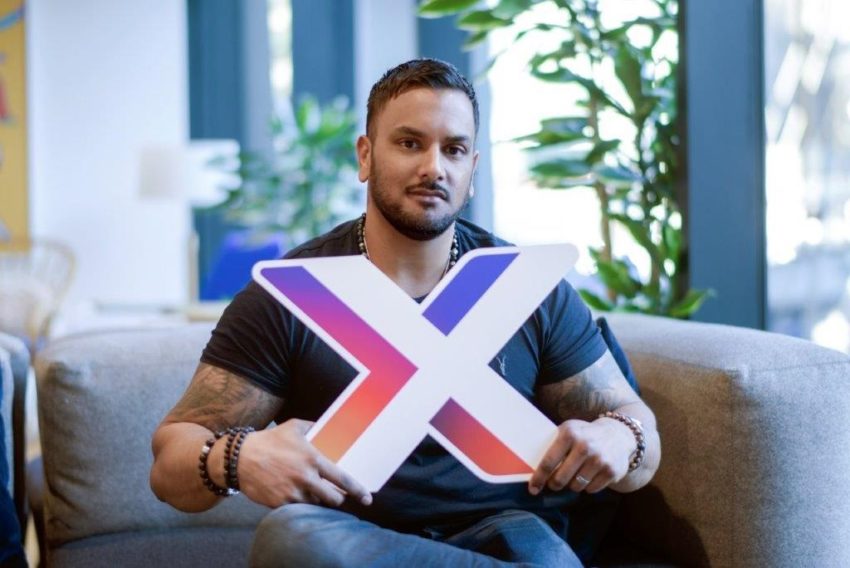CandidateX is focused on accelerating workplace equality. Co-founder Sunil Dial discusses tackling bias and discrimination and offers tips for driving change faster.
Sunil Dial knows first-hand that people from ethnic minority backgrounds have extra hurdles to overcome the higher they climb on the career ladder.
But the full extent of open bias and discrimination only became apparent six years ago when he launched his own recruitment company – LWL Recruitment.
“That was the pivotal moment, and it was shocking,” Dial recalls.
“When you’re in an organisation working, you don’t have time to see all the discrimination happening around you – the bigger picture. Working in recruitment dealing with candidates and clients is different.
“Daily we would face what I’d call an ‘old boys’ club where the hiring manager would say, ‘just get me a nice blonde, I don’t want anyone with an African-sounding name. No Islamic people because they won’t come out for drinks and they won’t fit the culture’.”
While LWL Recruitment prided itself on being an equality-led business, putting forward the right person for the job, challenging the prevailing attitudes of bias started to have a negative commercial impact.
X equals everyone
The experience prompted Dial to co-found the CandidateX movement, which aims to improve workplace equality and create an environment where everyone feels included, and their voices are heard. After three years in development, it went live in February this year.
The name CandidateX was chosen to represent everyone. It is building a community of like-minded people and sharing stories. It has also launched a talent engagement platform – a bit like a job board – that enables people to post and search for vacancies. But, unlike other job boards, as well as anonymising CVs, we put the candidate experience to the forefront of the process.
“A CV tells you everything about an individual: their name, potentially their ethnicity, if they’ve got a disability,” Dial argues. “All the things you might look for if you want to discriminate. As humans, we’ve got natural biases, so we needed to try and take that away to give everyone an equal chance.
“Straight away, as a candidate, you feel more comfortable and confident in applying for a role knowing that you’re not going to be judged on anything other than your skillset and experience.”
The CandidateX platform will tell candidates the demographic make-up of businesses and who is applying for roles. Clients can see who is looking at the jobs, who is applying and, if not, why not. It will provide an insight into how they are perceived and why they are not attracting the type of talent that they want.
D&I a priority for the young
Dial points out that, according to research, diversity, inclusion, and the values of the business are a top priority among younger job seekers.
He explains: “They will look into your business – the company pages that the CandidateX platform will have – the content you’re producing and commentary you give. They will also look to see how you are backing that up.”
Companies advertising on the CandidateX platform can have ambassadors whom candidates can contact to find out more about working for the organisation before deciding to apply.
As well as the benefits to candidates and employers, Dial believes that the platform could have a positive social impact. “We firmly believe in CandidateX that the issues we see now and resolving them involves how we educate the youth because they are going to be the next leaders,” he argues. “There’s a lot of underprivileged children out there. And, a lack of funding in schools etc., which are already missing a track on understanding cultural differences.
“We see the CandidateX platform being a catalyst and have committed to giving a percentage of income to a ‘CandidateX pot’. At the end a year, that pot will be presented to charity partners who work with underprivileged children. We hope that, in two generations, there won’t be a need for CandidateX.”
Authority to drive equality
While many companies have embraced CandidateX and shown a willingness to be more transparent about their hiring, there’s been silence from others.
“These are people that I’ve known at senior levels and who I have spoken with on gender imbalance, the pay gap and how they’re looking to change their team dynamics and other things for the better,” Dial says. “But now they’ve gone silent, and it’s a bit of a puzzle.
“What concerns me is how many are using diversity and inclusion and equality as PR. Suppose you’re serious about making it a more inclusive workplace, and you look to employ a head of diversity and inclusion. In that case, that person needs to have authority and a seat at the senior table to make a change.”
He adds that it’s ultimately up to the leadership to force through initiatives that will make a positive difference.
Dial is keen to point out that CandidateX represents all diverse groups and aims to share and promote what is working well. There was the issue of diverse groups operating in silos, which is demonstrated by celebrating disability one week, and ethnicity the next. But there was no long-term planning.
Also, many companies don’t understand that diversity and inclusion is more than just putting people into a classroom for a day or counting the number of employees from diverse backgrounds.
Tips for achieving a fairer workplace
Another issue was that many companies outsource their hiring to recruitment companies – in other words, passing on the problem of bias and discrimination to someone else. With 15,000 recruitment companies in the UK, the race is on to get candidates interviews and agencies may take just a few seconds to look at a CV.
Creating a fairer and more equal workplace requires a long-term commitment, but Dial believes there are five ways to speed up the process.
First, remove the bias from the recruitment selection process, using technology, where possible. Second, provide more transparency about what the business is doing.
Third is data. Says Dial: “The knowledge for individuals applying for a job or for businesses to measure themselves against their peers in the industry.
“Four would be government involvement with more legislation around it.
“And five, I would like to see leaders being held more accountable.”
Finally, he thinks that employers are not being proactive enough with diversity inclusion and are mainly reacting with quick fixes. “I’m writing about the exec search and senior leaders and why we can’t get a more diverse talent pool within that make-up and what the inhibitors are. My co-founder is writing an article, as well. We’re trying to do as much as we can to talk about our experiences and what we see, especially from a recruitment angle.”









